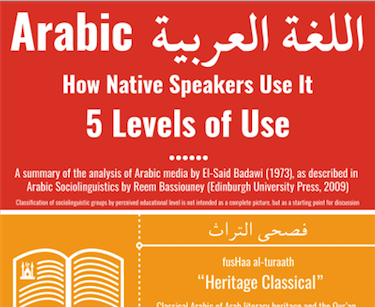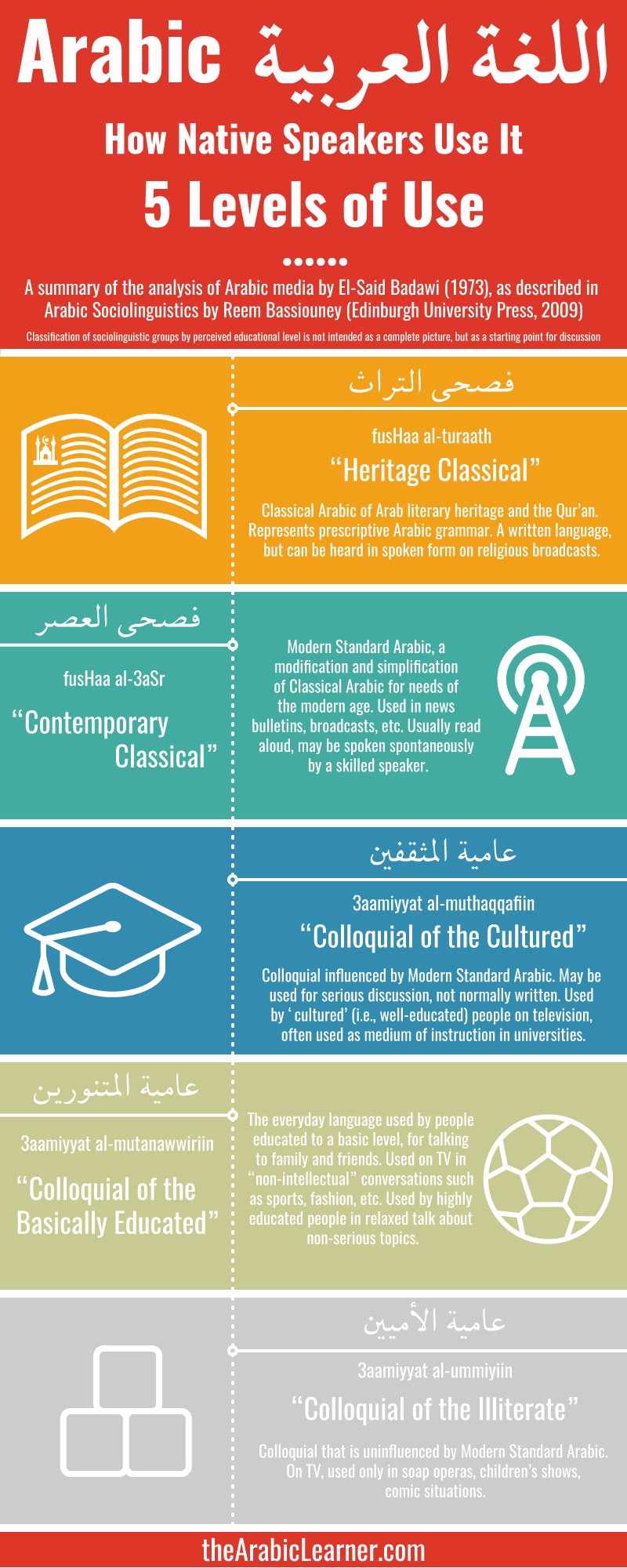This week’s blog post is an infographic I made the other day, after speaking with Laila Al-Sawi of the Intensive Arabic Program at the American University in Cairo. She made reference to the five levels of Arabic use described by the late El-Said Bedawi, and it got me thinking about how Classical Arabic (فصحى) and colloquial Arabic (عامية) are not as distinctly separated as many books and teaching approaches make it out to be. Rather, there is a spectrum of use. I hope this infographic is helpful in describing one model of what that looks like.
Speaking of Arabic sociolinguistics, I had a great talk with Kristen Brustad, co-author of الكتاب في تعلم العربية (al-Kitaab fii Ta3allum al-3arabiyya) yesterday. She had a lot of really interesting stuff to say about this issue! Like the fact that diglossia (a split between classical and colloquial) in Arabic is “an ideology and not a linguistic reality”, that the concept of فصحى (classical Arabic) is ideology-driven, and that women tend to be less ideology-driven than men, so we need more women Arabic teachers… lots of good stuff! If you are interested in getting an email when the book is ready, just click the button below.
[wpi_designer_button text=’Let me know when the book is ready!’ link=’http://eepurl.com/bleBM9′ target=’_blank’]
Ok, on to the infographic. Feel free to borrow, copy, whatever.



 RSS - Posts
RSS - Posts
2 thoughts on “Arabic use in real life – five levels”
Comments are closed.